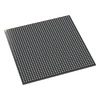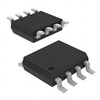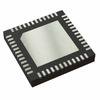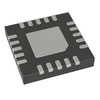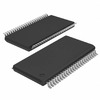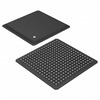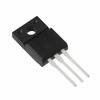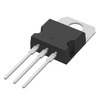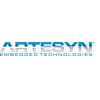Why Choose the 4N25 Optocoupler for Your Projects
The 4N25 optocoupler is a simple yet effective device that lets you safely transfer signals between circuits without direct electrical contact. In this article, you’ll learn how it works, its features, and where it can be used.Catalog

Introduction to 4N25 Optocoupler
The 4N25 optocoupler is a widely used device that allows you to connect and control circuits while keeping them electrically isolated. This isolation is achieved using an infrared LED and a phototransistor. When current flows through the LED, it emits light that activates the phototransistor, enabling current to pass in the second circuit. This setup ensures safe communication between circuits that may have different voltage levels, protecting sensitive components from damage.
Packaged in a compact 6-pin DIP design, the 4N25 optocoupler is versatile and reliable. Its design ensures that you can use it in various applications where electrical isolation and precise signal control are necessary. Whether you're working on motor controls, logic circuits, or communication systems, the 4N25 offers a practical solution for bridging circuits effectively.
4N25 Pin Configuration
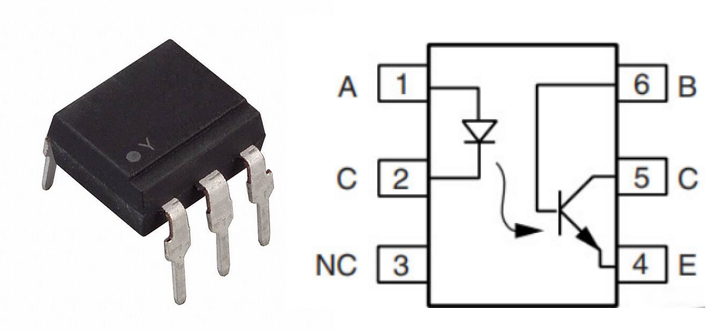
4N25 CAD Model
4N25 Symbol
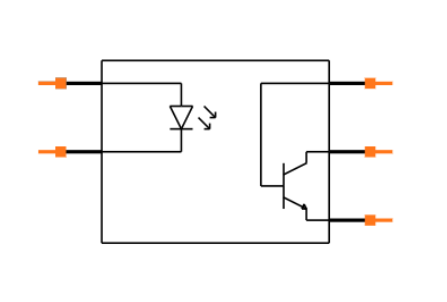
4N25 Footprint
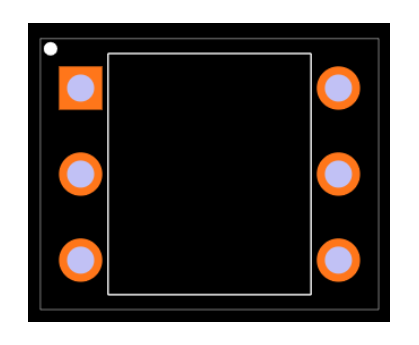
4N25 3D Model
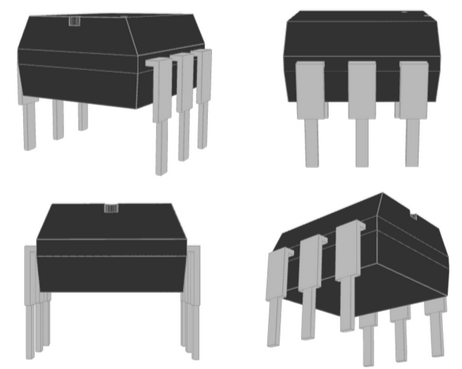
Key Features of 4N25
Infrared LED Forward Voltage
The infrared LED inside the 4N25 requires a forward voltage ranging between 1.25V and 1.5V, with 1.3V being the typical value. This means it activates reliably in most circuit designs without needing additional adjustments. The range ensures compatibility with standard voltage levels, simplifying its integration into your projects.
Infrared LED Current Range
The LED operates effectively at a typical current of 10mA but can handle up to 60mA when needed. This range allows the 4N25 to work in low-power and high-power applications, offering versatility for different circuit demands. With proper current-limiting resistors, you can control the LED's input for optimal performance.
Collector-Emitter Voltage
On the phototransistor side, the 4N25 supports a maximum collector-emitter voltage of 70V. This capability allows you to use the device in circuits with higher voltage levels, providing reliable operation without the risk of component failure. It ensures the optocoupler can handle demanding applications where higher voltages are present.
Isolation Voltage
One of the standout features of the 4N25 is its high isolation test voltage of up to 5000 VRMS. This guarantees a safe separation between the input and output sides, protecting your sensitive control circuitry from potential damage caused by high voltages or noise in the secondary circuit.
Fast Switching Time
With a rise time and fall time of about 2µs, the 4N25 is well-suited for high-speed applications. This fast response ensures that your circuits can operate efficiently, especially in systems that require quick signal processing or switching.
Standard Package Design
The 4N25 is housed in a compact 6-pin dual inline package (DIP), which is widely recognized and easy to work with. Its standard design makes it compatible with most circuit boards and sockets, allowing for straightforward installation and replacement if needed.
RoHS Compliance
The 4N25 meets RoHS (Restriction of Hazardous Substances) standards, ensuring it is environmentally friendly and safe to use. This compliance is especially beneficial if you’re working on modern electronics projects that need to meet strict regulatory requirements.
4N25 Specifications
Technical specifications, features, characteristics, and components with comparable specifications of Vishay Semiconductor Opto Division 4N25
| Type | Parameter |
| Factory Lead Time | 14 Weeks |
| Contact Plating | Tin |
| Mount | PCB, Through Hole |
| Mounting Type | Through Hole |
| Package / Case | 6-DIP (0.300, 7.62mm) |
| Number of Pins | 6 |
| Supplier Device Package | 6-DIP |
| Collector-Emitter Breakdown Voltage | 30V |
| Current Transfer Ratio-Min | 20% @ 10mA |
| Number of Elements | 1 |
| Operating Temperature | -55°C~100°C |
| Packaging | Tube |
| Published | 2014 |
| Part Status | Active |
| Moisture Sensitivity Level (MSL) | 1 (Unlimited) |
| Max Operating Temperature | 100°C |
| Min Operating Temperature | -55°C |
| Max Power Dissipation | 150mW |
| Base Part Number | 4N25 |
| Approval Agency | UL, VDE |
| Voltage - Isolation | 5000Vrms |
| Output Voltage | 30V |
| Output Type | Transistor with Base |
| Number of Channels | 1 |
| Power Dissipation | 150mW |
| Voltage - Forward (Vf) (Typ) | 1.3V |
| Input Type | DC |
| Forward Current | 60mA |
| Max Output Voltage | 30V |
| Output Current per Channel | 50mA |
| Rise Time | 2s |
| Forward Voltage | 1.3V |
| Fall Time (Typ) | 2s |
| Collector Emitter Voltage (VCEO) | 30V |
| Max Collector Current | 100mA |
| Rise / Fall Time (Typ) | 2μs 2μs |
| Reverse Breakdown Voltage | 5V |
| Max Input Current | 60mA |
| Current - DC Forward (If) (Max) | 60mA |
| Input Current | 50mA |
| Max Junction Temperature (Tj) | 125°C |
| Vce Saturation (Max) | 500mV |
| Current Transfer Ratio | 50% |
| Height | 4.8mm |
| REACH SVHC | Unknown |
| Radiation Hardening | No |
| RoHS Status | ROHS3 Compliant |
| Lead Free | Lead Free |
Comparable Alternatives to 4N25
| Part Number | Description | Manufacturer |
| IL55B | Transistor Output Optocoupler, 1-Element, 5300V Isolation | Telefunken Microelectronics Gmbh |
| SFH601-3-X006 | Transistor Output Optocoupler, 1-Element, 5300V Isolation, 0.400 INCH, ROHS COMPLIANT, PLASTIC, DIP-6 | Vishay Semiconductors |
| H11AA | Transistor Output Optocoupler, 1-Element, 5000V Isolation | CT Micro International Corporation |
| SFH615A-1-X006 | Optocoupler - Transistor Output, 1 CHANNEL TRANSISTOR OUTPUT OPTOCOUPLER, DIP-4 | Vishay Intertechnologies |
| SFH6156-4-X001T | Transistor Output Optocoupler, 1-Element, 5300V Isolation | Siemens |
| ILD615-4-X019 | Transistor Output Optocoupler, 2-Element, 5300V Isolation, 0.400 INCH, ROHS COMPLIANT, PLASTIC, DIP-8 | Vishay Semiconductors |
| ILD615-2-X009T | Transistor Output Optocoupler, 2-Element, 5300V Isolation, DIP-8 | Infineon Technologies AG |
| SFH615-4-X001 | Transistor Output Optocoupler, 1-Element, 5300V Isolation, DIP-4 | Siemens |
| MCT271-X001 | Transistor Output Optocoupler, 1-Element, 5300V Isolation, DIP-6 | Siemens |
| SFH615A | Transistor Output Optocoupler, 1-Element, 5300V Isolation, PLASTIC, DIP-4 | Infineon Technologies AG |
Using the 4N25 Optocoupler
The 4N25 optocoupler combines two key components: an infrared LED and an infrared phototransistor. The LED is connected to terminals 1 and 2, while the phototransistor is connected to terminals 4, 5, and 6. This internal structure allows the device to transmit signals between circuits without direct electrical contact.
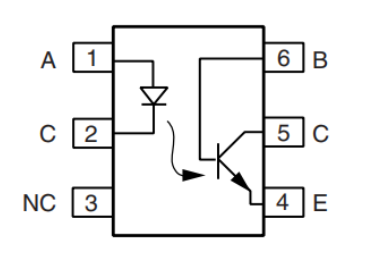
To see how it works, imagine a microcontroller circuit that sends a +3.3V pulse to the LED. When powered, the LED emits infrared light inside the chip, activating the phototransistor. Once the phototransistor is turned on, it allows current to flow in the connected load circuit. For example, this current could power a motor, causing it to rotate.
When the microcontroller output goes low, the LED stops emitting light. Without the infrared light, the phototransistor turns off, cutting off current flow in the load circuit. This process stops the motor.

This design ensures the control circuit remains isolated from the load circuit, which can have different voltage levels. The separation protects the microcontroller and other sensitive components while maintaining efficient operation in various applications like motor controls and logic circuits.
Applications of 4N25
DC Motor Speed Control
The 4N25 plays a significant role in controlling the speed of DC motors by isolating the control circuit from the motor circuit. This isolation ensures that any electrical noise or surges from the motor do not affect the sensitive control system. By adjusting the input signals to the optocoupler, you can fine-tune the motor speed with precision.
Lighting Systems
In lighting systems, the 4N25 allows you to control brightness or on/off switching while keeping the control and load circuits separate. This is particularly useful in dimmer circuits or automated lighting setups, where electrical isolation ensures safety and reliability.
Pulse Width Modulation (PWM) Applications
The 4N25 is widely used in PWM circuits for precise control of power delivered to devices like motors, LEDs, or heaters. Its ability to isolate the microcontroller from the high-power components ensures smooth operation and prevents damage to the control circuitry.
AC Mains Detection
The 4N25 can detect the presence of AC mains voltage in a circuit, making it an ideal choice for monitoring or protection systems. By isolating the sensing circuit from the mains supply, it protects low-voltage components and enhances the overall safety of the system.
Reed Relay Driving
Driving reed relays with the 4N25 allows you to achieve isolated switching. This is especially helpful in circuits where the relay needs to control high-voltage or high-current loads, as it shields the control side from potential interference or damage.
Switch Mode Power Supply Feedback
In switch mode power supplies, the 4N25 serves in feedback loops to regulate output voltage. By transmitting feedback signals while isolating the control circuit, it ensures stable and consistent performance of the power supply. This application is common in devices that require precise voltage control.
Telephone Ring Detection
The 4N25 is used in telephone systems to detect incoming ring signals. It provides the necessary isolation between the telephone line and the control circuit, ensuring that the system operates reliably without the risk of damage from line voltage fluctuations.
Noise Rejection in Logic Coupling
By isolating logic circuits, the 4N25 helps reduce high-frequency noise, improving the reliability of signal processing. This feature is especially useful in environments with significant electrical noise, where clean signal transfer is critical for stable circuit operation. This makes it a preferred choice in industrial control and communication systems.
Packaging Details for 4N25

Manufacturer of 4N25
Vishay Intertechnology, Inc. is the company behind the 4N25 optocoupler. Known for producing high-quality electronic components, Vishay specializes in semiconductors and passive components that serve a wide range of industries. From optoelectronics like the 4N25 to resistors, capacitors, and MOSFETs, their products are designed to perform reliably in demanding environments.
About us
ALLELCO LIMITED
Read more
Quick inquiry
Please send an inquiry, we will respond immediately.
Frequently Asked Questions [FAQ]
1. How do you connect the pins of the 4N25 optocoupler?
To connect the 4N25, attach the infrared LED's anode to pin 1 and cathode to pin 2. The phototransistor's collector connects to pin 4, and the emitter connects to pin 5. Pin 6 is the base, which can adjust sensitivity, while pin 3 remains unconnected. This setup isolates the input and output circuits effectively.
2. How does the 4N25 optocoupler work?
The 4N25 transfers signals by converting electrical energy into light using its LED. The light activates the phototransistor, allowing current to flow in the output circuit. This process keeps the two circuits electrically separated while enabling safe signal transmission.
3. Can the 4N25 replace the PC817?
The 4N25 can replace the PC817 in digital circuits if their pin configurations are adjusted on the PCB. However, the PC817 is better for linear applications, like power supply feedback, where its design is more suitable.

BC556B Transistor: A Versatile PNP Component
on November 15th

Comprehensive Guide to TDA7377 Audio Amplifier
on November 15th
Popular Posts
-

What is GND in the circuit?
on January 1th 3255
-

RJ-45 Connector Guide: RJ-45 Connector Color Codes, Wiring Schemes, R-J45 Applications, RJ-45 Datasheets
on January 1th 2805
-

Understanding Power Supply Voltages in Electronics VCC, VDD, VEE, VSS, and GND
on November 20th 2613
-

Fiber Connector Types: SC Vs LC And LC Vs MTP
on January 1th 2250
-

Comparison Between DB9 and RS232
on January 1th 1868
-

What Is An LR44 Battery?
Electricity, that ubiquitous force, quietly permeates every aspect of our daily lives, from trivial gadgets to life-threatening medical equipment, it plays a silent role. However, truly grasping this energy, especially how to store and efficiently output it, is no easy task. It is against this background that this article will focus on a type of coin cell battery that may seem insignificant on the...on January 1th 1836
-

Understanding the Fundamentals:Inductance Resistance, andCapacitance
In the intricate dance of electrical engineering, a trio of fundamental elements takes center stage: inductance, resistance, and capacitance. Each bears unique traits that dictate the dynamic rhythms of electronic circuits. Here, we embark on a journey to decipher the complexities of these components, to uncover their distinct roles and practical uses within the vast electrical orchestra. Inductan...on January 1th 1791
-

What Is RF and Why Do We Use It?
Radio Frequency (RF) technology is a key part of modern wireless communication, enabling data transmission over long distances without physical connections. This article delves into the basics of RF, explaining how electromagnetic radiation (EMR) makes RF communication possible. We will explore the principles of EMR, the creation and control of RF signals, and their wide-ranging uses. The article ...on January 1th 1780
-

CR2430 Battery Comprehensive Guide: Specifications, Applications and Comparison to CR2032 Batteries
What is CR2430 battery ?Benefits of CR2430 BatteriesNormCR2430 Battery ApplicationsCR2430 EquivalentCR2430 VS CR2032Battery CR2430 SizeWhat to look for when buying the CR2430 and equivalentsData Sheet PDFFrequently Asked Questions Batteries are the heart of small electronic devices. Among the many types available, coin cells play a crucial role, commonly found in calculators, remote controls, and ...on January 1th 1777
-

Comprehensive guide to hFE in transistors
Transistors are crucial components in modern electronic devices, enabling signal amplification and control. This article delves into the knowledge surrounding hFE, including how to select a transistor's hFE value, how to find hFE, and the gain of different types of transistors. Through our exploration of hFE, we gain a deeper understanding of how transistors work and their role in electronic circu...on November 20th 1763





